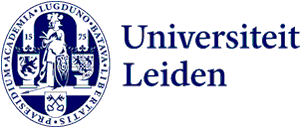
Trends in museums: ‘A lot of museums have a dormant collection of pre-colonial art’
What effect do trends in the art world have on the formation of museum collections? University lecturer Martin Berger wants to answer that question in his research within the Museums, Collections and Society project, which asks ethical questions about the origin of collections.
Berger specialises in meso-American art from the period 900 to 1521, which became popular in European and North American museums in the early twentieth century. ‘During this period, Western, modern artists became interested in what they called “primitive art”’, Berger explains. ‘Around 1930, objects that had previously served primarily as objects for scientific research, such as masks, were elevated to art. In fact, after World War II, they had become so popular that archaeological sites were looted on a large scale. This also influenced museums: they began to acquire these kinds of objects frequently, even when they didn’t have any collections in that area.’
Urge to collect
This urge to collect has resulted in ‘dormant collections’: a lot of museums still have collections with pre-colonial art in their depot, but lack curators or researchers that can work on them. Precisely those collections have Berger’s attention: ‘A lot of those collections have been digitised in the last couple of years. If it works, I want to look through the lists that describe objects, using big data techniques. This way, I can find out which objects are located in which museums, which networks have formed these collections and, this way, in what ways trends have influenced the twentieth-century art world and why museum collections look the way they do.’
In order to determine how collections were formed in the twentieth century, Berger also pays attention to the marketing techniques of art dealers in his research. ‘They are often omitted from pre-colonial archaeology, because museums are ashamed of how they obtained pre-colonial objects. But precisely those dealers have been fundamental to ways in which researchers and museums look at pre-colonial art. The majority of the displayed collection in the Museum Volkenkunde (National Museum of Ethnology, ed.), for example, has been obtained via trade.’
To give back or not
By also looking at art dealers, Berger’s research touches on a larger theme within Museums, Collections and Society: looted art. How did museums obtain their collections and how should we relate to these objects now? 'In the Netherlands, the discussion on looted art still very much focusses on the colonial era’, argues Berger, ‘but in the period that I am researching, Latin America was largely independent. This causes the situation to not really fit into the binary frame of “to give back or not”. Sometimes, the community of origin is, for example, more interested in the revitalisation of knowledge than in the return of an object. I noticed this when a representative of the Wayana people visited the Museum Volkenkunde to see a headdress that hasn’t been made since the 1980s. These people did not necessarily want that object back, but they did want precise photographs of, for example, the weaving, so that they could keep their traditions alive. Sometimes, little attention is paid to these kinds of solutions. I therefore hope that we will succeed in broadening the debate on looted art, at least in the academic context.’
Collaboration between museum and university
The interdisciplinary nature of Museums, Collections and Society can help in that broadening. ‘As an archaeologist, I work with art historians, anthropologists and lawyers. Because of those different backgrounds, our questions complement each other and we automatically have different perspectives on issues.’ As far as Berger is concerned, this interdisciplinary collaboration will therefore be further explored in education. ‘We currently have more than twenty courses on museums and heritage at three or four faculties. It would be nice if we, Museums, Collections and Society, could add a bit more alignment and integration to that. I would also like to see that outside of the faculty. When I worked at the Museum Volkenkunde as a curator, I sometimes missed a sustainable collaboration with the university, especially because so much attention is paid to museums here. When COVID-19 allows it, I would therefore like to establish a collaboration with museums, for example students doing an internship on collection research there.’
Martin Berger is an assistant professor at the Faculty of Archaeology and a member of the interdisciplinary research group Museums, Collections, and Society. His research interests include (etnographic) museums and collections histories, indigenous forms of representation, and the impact of globalization on indigenous cultures. He has explored these interests with specific attention to Mesoamerica and Surinam.
